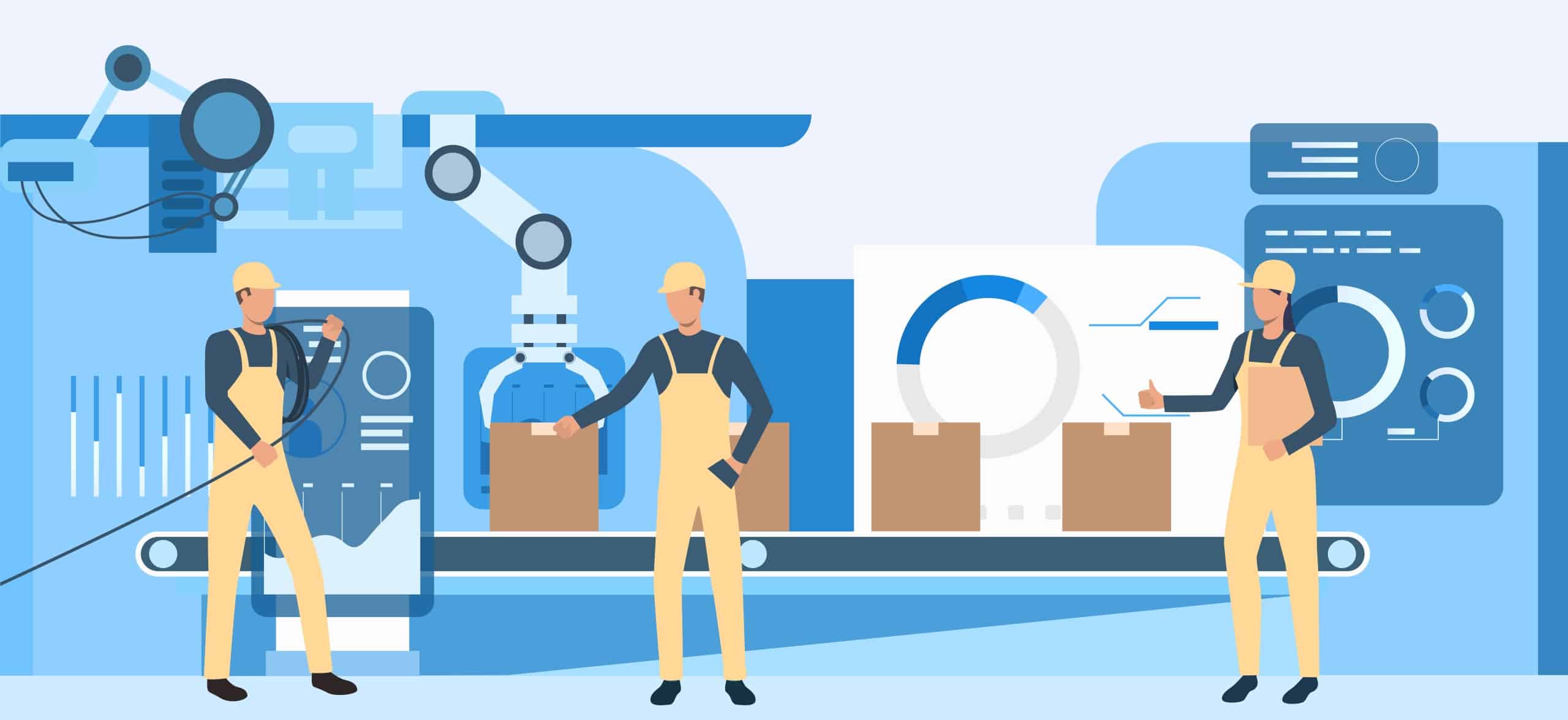1. Fabric Preparation: The Start of the Process
The first stage of the production process for wet wipes is fabric preparation. Wet wipe fabric is usually composed of non-woven materials such as bamboo, cotton, or polyester, which give the wipes their characteristic softness and durability. The “parent rolls,” or big rolls of this material, are fed into the machine. These rolls are enormous and weighty—they sometimes weigh hundreds of kilos.
The fabric is fed into the system without wrinkling or experiencing tension problems as the machine effortlessly unwinds these rolls. In order to guarantee this, sophisticated sensors are used to maintain a constant fabric flow, automatically correcting any irregularities. For novices, it could be useful to visualize this as unfolding an enormous roll of paper towels, but with precise equipment managing each stage to guarantee the cloth travels through the procedure without any problems. Because every irregularity in the fabric might have an impact on the final product’s quality, this preparatory phase is essential.
2. Cutting and Folding: Precision at High Speeds
Following the fabric’s preparation and feeding into the machine, the cloth is cut and folded with amazing speed and accuracy. The big rolls of cloth are divided into separate, identical-sized sheets. High-speed rotary blades or guillotine-style cutters, which are meant to run constantly without slowing down, are used for this. These devices can cut hundreds of pages in a minute with flawless precision since they operate at such high speeds.
The wet wipes are cut and then folded into predetermined designs. The way the wipes are distributed from their container is determined by the folding process, which makes it crucial. Some wipes, for instance, are folded in a “Z” form, which makes it simple to remove each wipe individually from a package, while other wipes, such as canister-style wipes, may be folded differently. A unique mechanism inside the machine folds the wipes precisely the same way every time, eliminating jams and misalignments during the packing process.
Beginners may find it helpful to compare the process to that of manufacturing paper fans, which involves cutting huge sheets into smaller pieces and folding them neatly. However, this is an industrial process, and accuracy is essential to ensure that the wipes function well when removed from their packaging. For the wipes to disburse correctly, every fold must be flawless, which makes this process very technical and crucial.
3. Moisturizing: The Core Element of Wet Wipes
Moisturizing is an essential stage in the manufacturing process since it’s what turns plain cloth sheets into wet wipes. The cloth goes to the moisturizing step after it has been cut and folded. The liquid solution that provides wet wipes their cleaning or disinfecting abilities is now carefully added by the machine. Depending on the kind of wet wipe being made—whether it’s baby wipes, makeup removers, or antibacterial wipes—this solution may consist of a combination of water, cleansers, scents, preservatives, or even disinfectants.
Making sure each wipe has the ideal quantity of wetness is the main problem at this point. If there’s not enough liquid, the wipes won’t work well; if there’s too much, the wipes can become overly saturated and leak or cling to one another in the container. Modern machines employ precision nozzles to spray or saturate the wipes with a precise quantity of liquid in order to achieve this equilibrium. These nozzles are managed by sensors that continuously check the moisture content and automatically adjust to maintain uniformity.
For novices, picture softly misting a paper towel with a spray bottle; the goal is to ensure that the towel is moist but not drenched. Within an industrial context, this procedure proceeds much more quickly and precisely. As the fabric travels down the manufacturing line, it goes through a segment where the solution is applied uniformly across each sheet. In order to guarantee that each product satisfies the unique requirements of its intended usage, machines may also be designed to apply varying volumes of liquid to various kinds of wipes.
The wipes are moistened, then gently advanced to the next step, suitable for packing, without upsetting the moisture balance. This step of the procedure not only guarantees the wipes’ efficacy but also aids in preserving their quality and usefulness when they are sealed in their packaging.
4. Stacking or Rolling: Preparing for Packaging
Making the wet wipes ready for packing is an essential next step once they have been adequately moistened. The wipes are either rolled into tightly coiled spirals or neatly piled into heaps, depending on the kind of product and the container structure. Whether the end-user is taking wipes out of a package or dispensing them from a canister, this step makes sure the wipes are arranged so they are simple to distribute.
When it comes to flat-pack wet wipes, which are often found in baby wipes or personal hygiene products, the machine automatically arranges the folded wipes into neat, level stacks. The purpose of this stacking procedure is to guarantee that each wipe may be removed from the pack without causing any disturbance to the others. Each sheet in the complex system is precisely aligned to ensure the right flow during dispensing. At this point, any misalignment might result in the wipes tearing or being stuck, which would be annoying for the user.
The procedure is a bit different for canister-style wet wipes, which are often used to clean or disinfect surfaces. The wipes are rolled into little cylinders rather than layered. Because of the way the cloth is made, when a wipe is removed from the canister, it comes out easily, leaving the next one ready for use. In order to maintain the proper tension and avoid the wipes being too loose or tightly packed, which might lead to issues during dispensing, the rolling process is strictly regulated.
Although these rolling and stacking procedures seem straightforward, they have been meticulously adjusted to guarantee reliability and user-friendliness. Error risk is reduced by using robotic devices and sophisticated sensors to precisely guide the wipes into position. This degree of automation ensures that the final product—whether it is a roll of cleaning wipes in bulk or a single-use wipe in a travel pack—functions properly. Preparing the wipes for packing is a vital step in maintaining consumer happiness, since this organization directly effects the simplicity and functionality of the finished product.
5. Packaging: Sealing in Freshness
Wet wipes are packaged as the last stage of the production process, where their freshness and wetness are maintained by sealing the wipes inside their containers. Whether the wipes are packaged in canisters, individual sachets, or soft packs, the packaging is essential to preserving the product’s quality. The wipes may become useless if the packing is done incorrectly and they dry out or get contaminated.
The packing machine has specific sealing mechanisms for flat-pack wet wipes. The wipes are layered, then put into heat-sealed, cut packing films to guarantee airtightness. By precisely controlling both temperature and pressure, the heat-sealing process keeps the moisture within the pack and keeps air out. This preserves the wipes’ freshness from the time they are packed until the customer opens them. A plastic flip-top cover or resealable adhesive may also be included in the package to enable consumers to retrieve the wipes again without losing their freshness.
Wet wipes in the canister form go through a somewhat different packing procedure. To keep the wipes wet, they are rolled into small cylinders and then put into plastic canisters that are sealed with a foil or plastic cap. This seal is crucial, since it prevents the wipes from drying out before they reach the customer. A plastic cap, which often has a dispensing mechanism that lets customers take out one wipe at a time, is put on top after the seal.
Quality control is one of the most crucial steps in the packaging process. Sensors on the machines verify that every package is properly sealed. A package is automatically marked for examination if it is not properly packed or does not match the weight or moisture requirements. This degree of inspection guarantees that every package that comes off the assembly line is fit for retail shelves and will provide the product a lengthy shelf life.
At this point, contemporary packaging machines may also print labels, logos, and product details directly into the package. This guarantees that the product is aesthetically pleasing on shop shelves while also helping companies communicate their identity and regulatory information, such lot numbers and expiry dates. In addition to safeguarding the product, proper packaging improves user experience and brand impression by keeping wipes fresh and potent until the very last one is used.
6. Labeling and Coding: Branding and Traceability
The last steps in the manufacture of wet wipes are labeling and coding, which prepare the product for tracking and regulatory compliance in addition to the consumer. This stage is essential for product compliance with industry and regulatory requirements, traceability, and branding. The machine adds labels, logos, expiry dates, and batch codes—which include crucial information for the manufacturers and the customer—after the wipes are packed and sealed.
When it comes to branding, the label is what customers notice right away when they open a box of wet wipes. Included are crucial particulars such the product kind, brand name, use guidelines, and salient attributes like “alcohol-free” or “sensitive skin formula.” Modern packaging equipment has printing components that enable these labels to be applied precisely. These machines guarantee that the label is perfectly put on every item, giving it a polished, consistent look, regardless of whether adhesive labels or direct printing techniques are used.
The packing line is equipped with coding systems that apply batch numbers, production dates, and expiry dates for traceability. These identifiers enable wet wipes manufacturers to track any product back to a particular batch in the event of a recall or malfunction, which makes them crucial for quality assurance and product safety. This degree of product tracking makes it easier for manufacturers to keep an eye on the quality of their manufacturing and act fast to resolve any problems. This is particularly crucial for wet wipes used in sensitive applications like newborn care or healthcare, where safety and compliance are vital.
Laser and inkjet printers are often used for coding because they can print tiny details without smearing or fading. These numbers must be readable for the duration of the product’s shelf life and are often tucked away on the bottom or rear of the box. The labeling procedure becomes much more difficult for items that are marketed in numerous markets since these labels may additionally contain translations or extra information mandated by local legislation.
The packaging’s arrangement of logos, product details, and traceability tags fulfills functional and marketing needs. On the one hand, it aids companies in informing customers about the advantages and distinctive qualities of their goods. Conversely, it guarantees that the product is readily trackable, guaranteeing adherence to industry standards and enabling effective recall procedures when necessary. In addition to improving the product’s overall appearance, this meticulous attention to labeling and coding details guarantees that wet wipes manufacturers maintain strict quality and accountability guidelines.
7. Quality Control: Ensuring Product Consistency
In the production of wet wipes, quality control is an essential step that guarantees each product satisfies the exacting requirements established by the producer and authorities. Several tests are made to ensure product uniformity and dependability from the time raw materials enter the wet wipes manufacturing line to the final packing and labeling. By ensuring that the wipes are safe and effective, this step not only helps to establish customer confidence but also ensures that the product works as intended every time.
Quality control begins with the examination of raw materials, such as fabric rolls and liquid solutions, at the beginning of the manufacturing process. The fabric is inspected by sensors and automated systems for irregularities like holes or rips, as well as for differences in thickness. The material is discarded before it may proceed in the process if any problems are found. In a similar vein, the chemical makeup of the solution used to moisten the wipes is examined to make sure it satisfies safety regulations and works well for the particular kind of wet wipe being manufactured, whether it personal care, cleaning, or disinfection.
Quality control procedures are followed throughout the wet wipes manufacturing process, from folding and cutting to moisturizing and packing. Sensors and automated vision systems keep an eye on the wipes to ensure they are folded correctly and are the right size and moisture content. The machine will automatically make necessary modifications or stop production until the problem is fixed if it notices even the smallest deviation, such as an erroneous fold or poor moisture saturation. Every wipe that comes off the line is consistent in size, texture, and moisture content thanks to this real-time feedback system.
At crucial junctures in the manufacturing process, human inspections are often carried out in addition to these computerized checks. Operators will assess the wipes’ softness, absorbency, and general quality by choosing packs at random. Additional testing to check for skin sensitivity, pH balance, and other safety factors may be carried out for items such as baby wipes or medical-grade wipes to make sure the product is suitable to use on sensitive skin or in healthcare settings.
There are last-minute quality control inspections once the wipes are packed. Each pack is weighed by machines that are designed to ensure the right amount of wipes are included. A pack is immediately taken out of the line for further examination if it is overweight or underweight. By following this procedure, packing mistakes like spilled liquid or missing wipes are prevented.
Furthermore, traceability and batch tagging are essential components of quality control. Because each batch of wet wipes is given a unique identifier, the makers are able to link any problems to a particular manufacturing run. This is especially crucial in the case of a product recall or the discovery of a flaw in a specific batch. Wet wipes manufacturers may minimize the effect on customers and uphold the integrity of the brand by swiftly identifying the problem’s cause and taking remedial action via batch coding.
To summarize, quality control is a continuous process that occurs throughout the manufacture of wet wipes, not simply a single inspection at the end of the production line. Every wipe is reliable, secure, and efficient thanks to the use of cutting-edge technology including automation, vision systems, and sensors. Wet wipes manufacturers can offer a product that customers can trust, guaranteeing satisfaction and repeat business while preserving their reputation for excellence, by adhering to strict quality control standards.








